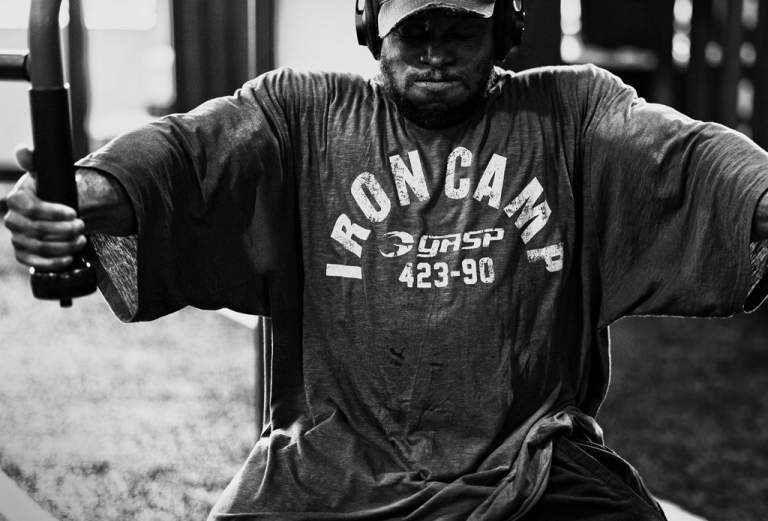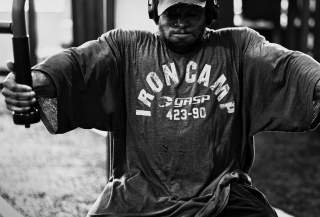I love reading about fitness and exercise. I’m very lucky in many ways because I get paid to talk and write about my hobby and that means the research I have to do to stay ahead of the information curve doesn’t feel like “homework” but is actually something I’d be doing if I wasn’t professionally involved in fitness anyway.
The beauty of the internet is that I have a virtually unlimited library of fitness information to peruse and pursue and one bit of research always leads to another and another and another – it’s never ending.
One of the main things I have noticed over the last few years is that “hardcore” sells. Organizations like CrossFit have gone a long way to popularize demanding, advanced-level workouts like interval training, Tabata training, intense metabolic circuits, Olympic-style lifting, powerlifting and all that good stuff.
Now don’t get me wrong – I LOVE tough workouts and can’t let a week go past without pushing my limits in one way or another but there comes a time for most exercisers when you need to turn off “beast mode” and enjoy some rest.
The thing is, intense training takes a lot of energy out of you and if you only ever go “eyeballs out” as we used to call it in the Marines, you will sooner or later come to the point where you simply cannot push it any longer or harder and you reach a fitness plateau. Fitness plateaus are about as much fun as the flu; you train and train but simply don’t see any improvements. In fact, if you keep on hammering away you may actually experience some regression. Talk about frustration!
As the saying goes, and this is one of my favourites, when you are flogging a dead horse, it doesn’t matter how big the stick is. In other words, if you are in a fitness rut, more of the same will not get you out of it.
So, if what you are doing is no longer yielding the results you want, what can you do? If more training is not the answer, you should consider the opposite – doing less.
Your body, miraculous meat machine that it is, only has so much to offer in the way to energy. If you keep on taking energy out in the form of hard training but never “recharge your batteries” you’ll end up in the aforementioned fitness rut. Going at your workouts at full speed week after week and month after month will inevitably lead to stagnation and, quite likely, injury.
To avoid crashing into the wall and inadvertently putting the brakes on progress, I suggest you build recovery weeks into your exercise schedule. As I was told as an athlete many MANY years ago, it’s better to take time off by choice than be forced to take time off because of injury.
Personally, the idea of a week without exercise gives me the willies – and no way do I advocate such a measure unless you are ill, truly overtrained or enjoying a holiday in the sun. Instead, for the vast majority of exercisers, I recommend implementing periodic back-off weeks.
To give you an example of what I mean, here is my last six-week block of training in terms of intensity…
-
Moderate (sets of five)
-
Heavy (sets of two)
-
Light (sets of eight)
-
Moderate (sets of five)
-
Heavy (sets of two)
-
Back-off
-
Cycle repeats, starting with moderate
Each workout week was tough and built up over the five weeks to some new PBs (that’s personal bests for those of you who don’t speak in abbreviations) but rather than trying to maintain that new peak of performance, I ended the phase on a high and then enjoyed a strategically-placed back-off week to rest and recuperate for the next block of training.
My main training interest is strength but you could apply this model to endurance training just as easily.
So what happens during a back-off week? Good question! Training days remain mostly unchanged and intensity remains moderately high but volume is cut down by around 50-percent. In other words, you warm up as usual, lift slightly lighter weights or run at a slightly slower pace than normal but do fewer sets or fewer miles than normal. By maintaining intensity but halving training volume, magic happens…
Instead of finishing your workout feeling like you have given it your all and it’s questionable whether you’ll make the walk from the gym to the car park unaided, you finish your workout feeling energized and elated. You get the same endorphin rush but without the fatigue that a tough workout inevitably brings. This makes you feel powerful and rather beaten down. You’ll finish your workout thinking “wow that was easy!” instead of “damn that was hard”. It’s very empowering mentally AND restorative physically.
When you return to your regular workout schedule, you will be well-rested (because of the reduced training volume) but not have lost any fitness or strength (because you maintained workout intensity) and will be more than ready to “screw the nut” again and work up to a new fitness peak.
This “three steps forward, one step back” approach to training should keep you making progress for months if not years to come. Training plateaus? Forget about them!
Training hard is great but you also need to train smart if performance is your goal. Doing the same old same old will put you in a rut before you realize it. Build periodic back-off weeks into your schedule and you’ll soon see renewed progress from your training.












1 Comment
Comments are closed.